The GB Invasive Non-native Species Strategy provides a strategic framework within which the actions of government departments, their related bodies and key stakeholders can be better co-ordinated.
GB Invasive Non-native Species Strategy (2023 to 2030)
English
- GB Invasive Non-native Species Strategy (2023 to 2030) PDF
- GB Invasive Non-native Species Strategy (2023 to 2030) HTML
Welsh
- Strategaeth Rhywogaethau Estron Goresgynnol Prydain Fawr (2023 i 2030) PDF
- Strategaeth Rhywogaethau Estron Goresgynnol Prydain Fawr (2023 i 2030) HTML
Invasive Non-Native Species (INNS) threaten our biodiversity, our ecosystems, and our economy. They are one of the top five drivers of biodiversity loss globally. This updated Strategy builds on the successes of the last fourteen years and sets out a series of ambitious aims to guide our strong partnership of government, voluntary organisations, NGOs, researchers, businesses and the public into 2030. The Strategy ensures that Great Britain will continue to demonstrate, both nationally and internationally, that we take the threat posed by INNS seriously and are prepared to take concerted action against it.
Background to the development of the Strategy
The original Strategy was published in 2008 in response to a policy review (PDF) published in 2003. A key recommendation of that review was to improve coordination and application of non-native species policy across government, which also led to the formation of the GB Non-native Species Mechanism.
An updated version of the Strategy was published in 2015 following extensive stakeholder consultation and reviews conducted by Piero Genovesi, Chair of the IUCN SSC Invasive Species Specialist Group and Dr Phil Hulme of Lincoln University, New Zealand.
An independent review of the 2015 Strategy was undertaken in 2020/21. This has informed the updated Strategy which will provide the strategic framework up to 2030.
Previous versions of the Strategy, and the reviews undertaken, are available below.
2008 Strategy
- 2008 GB Strategy, English (PDF)
- 2008 GB Strategy, Welsh (PDF)
- Review of the 2008 GB Framework Strategy for Invasive Non-native Species - Dr Piero Genovesi (PDF)
- Review of the 2008 GB Framework Strategy for Invasive Non-native Species - Dr Phil Hulme (PDF)
2015 Strategy
- 2015 GB Strategy, English (PDF)
- 2015 GB Strategy, Welsh (PDF)
- Independent review of the 2015 Strategy, English (PDF)
- Independent review of the 2015 Strategy, Welsh (PDF)
Key legislation
EU Regulation (1143/2014) on the prevention and management of the introduction and spread of invasive alien species.
EU Regulation 1143/2014 (external link) was retained in domestic law under the European Union (Withdrawal) Act 2018 (external link). It was amended through several statutory instruments to ensure operability following the UK’s exit from the EU but applies to Great Britain only. Find out more about the Regulation here.
The Invasive Alien Species (Enforcement and Permitting) Order 2019
The Invasive Alien Species (Enforcement and Permitting) Order 2019 (external link) came into force on 1 December 2019. It contains provisions relating to offences, penalties, enforcement, licensing and permitting in order to meet requirements of the Retained Regulation. Find out more about the Order here.
International policy and strategy
Convention on Biological Diversity (CBD)
This convention arose from the UN Conference on Environment and Development held in Rio in 1992. Within the framework of the convention there are 15 Guiding Principles for the prevention, introduction and mitigation of impacts of alien species that threaten ecosystems, habitats or species. The principles provide an international framework for governments and other organisations to develop effective strategies to prevent introduction, control and eradicate invasive non-native species. Article 8(h) states that each Contracting Party shall prevent the introduction of, control or eradicate those alien species which threaten ecosystems, habitats or species. Invasive alien species are also formally addressed in the Global Strategy on Plant Conservation.
2010 Target Contracting Parties to the CBD agreed to achieve by 2010 a significant reduction of the current rate of biodiversity loss at the global, regional and national level. In particular, one of the seven focal areas, area (c) refers to 'addressing the major threats to biodiversity, including those arising from invasive alien species, climate change, pollution, and habitat change'
